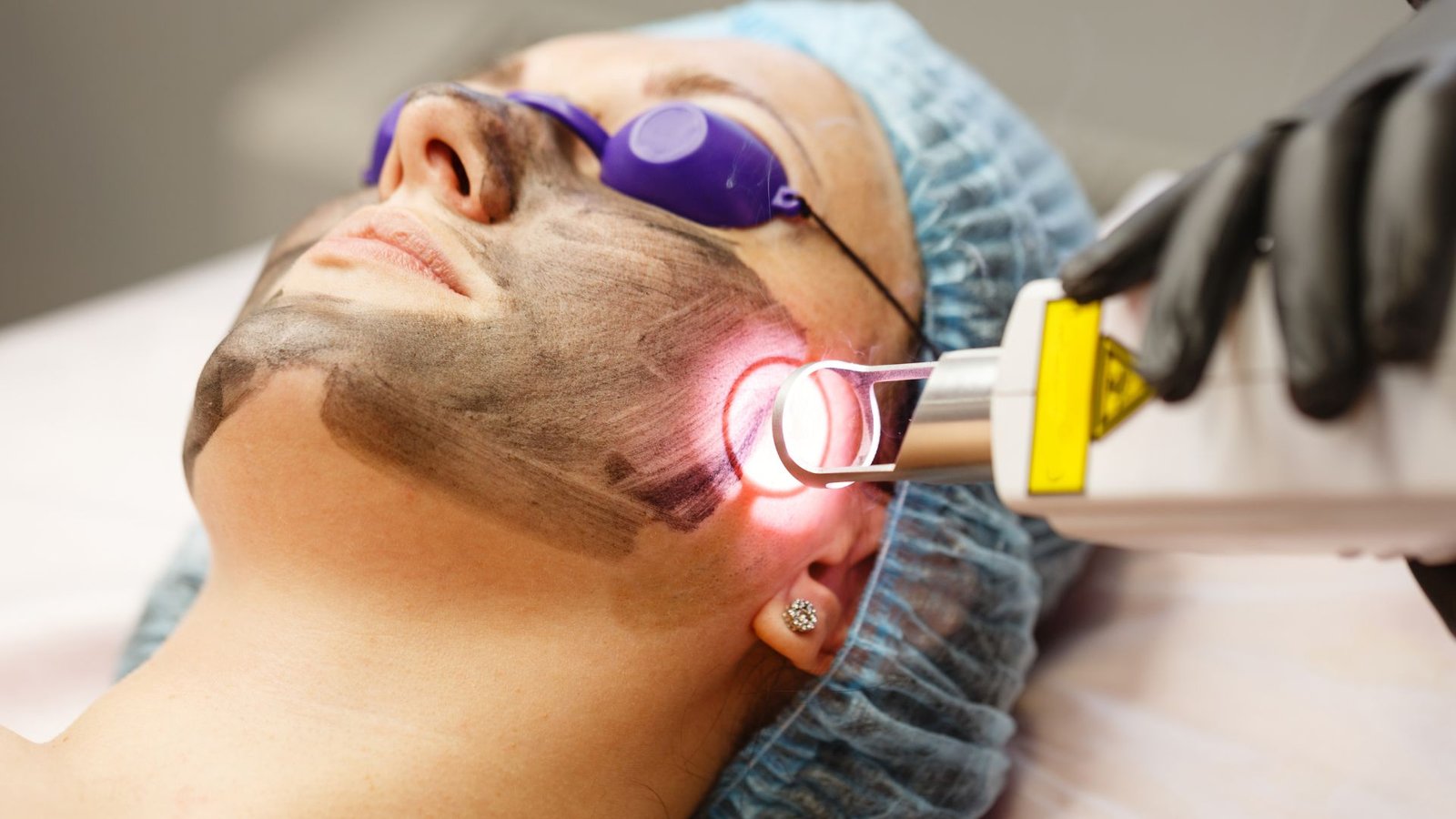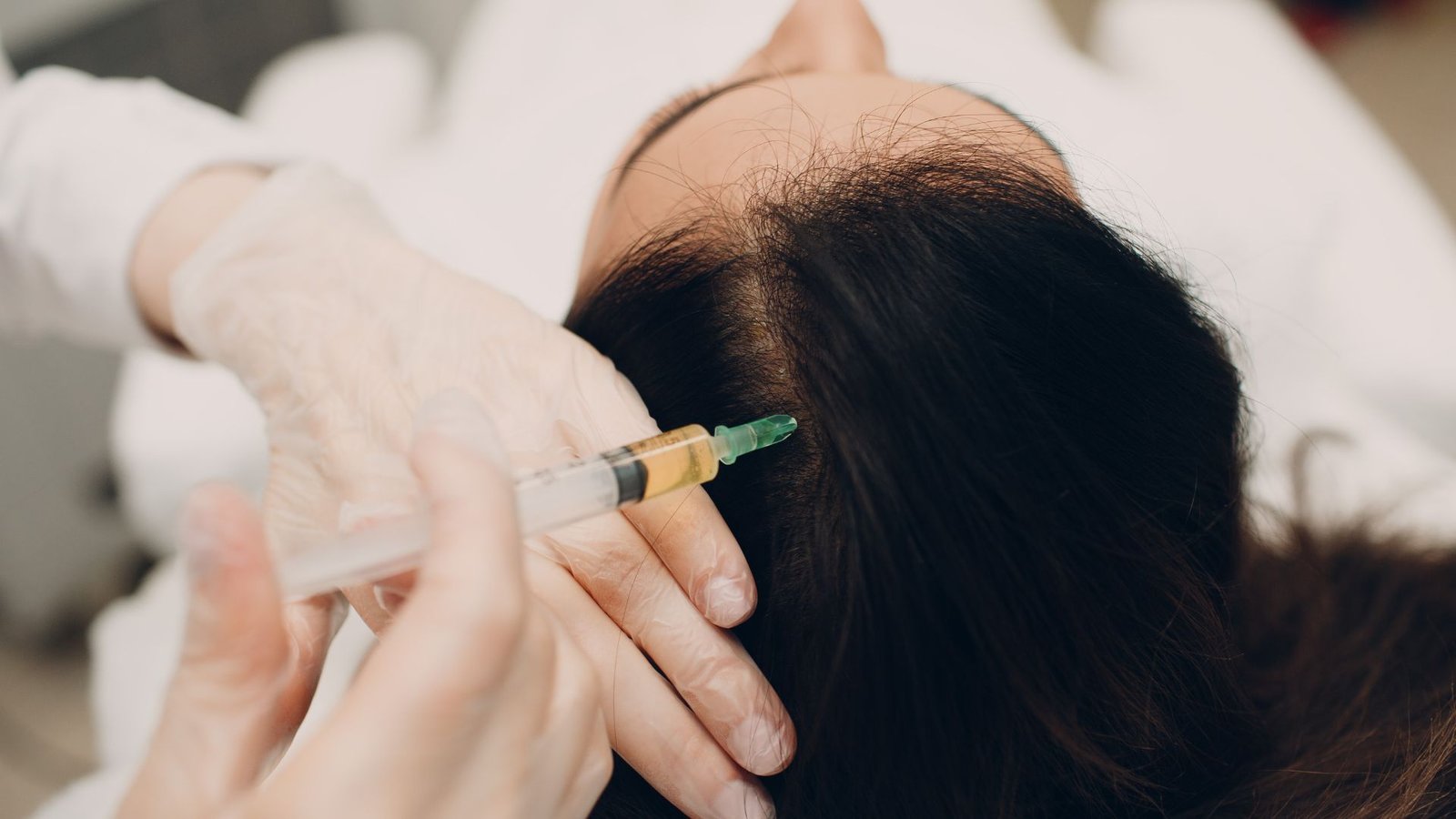Q Switch Laser Treatment: Benefits, Side Effects & Cost

Q-Switch Laser Treatment isn’t just another buzz in the dermatology world. It’s become the go-to option for people who are done trying skincare products that only work on the surface. If you’ve ever caught yourself wishing for a clearer, more even-toned, glowier version of your face — you’re about to get answers.
For the patches you’ve tried to scrub off.
For the melasma creams that barely made a dent.
For the acne marks that refuse to forget.
This blog breaks it all down: what the heck Q-switch laser is, how it works, whether it hurts, if there are side effects… and whether it actually WORKS, particularly if you have sun damage, pigmentation or acne scars from Indian skin.
What Is Q-Switch Laser Treatment?
The Q-Switch Laser (also called Q-Switched Nd:YAG Laser), remove the excess pigment in your skin – quickly, safely and without harming the surrounding tissue.
It functions by emitting short flashes of intense light energy that disperse melanin (the substance responsible for dark spots) into minute pieces. Your body then naturally flushes those out over time. No peeling. No scrubbing. No guesswork. This is the same laser that’s also used for tattoo removal — so you can imagine how deep and precise it is.
Q-Switch is used on:
- Face (cheeks, forehead, upper lip)
- Neck and back
- Arms or shoulders
- Even intimate areas for pigmentation concerns
In short: if it’s hyperpigmented, tanned, or marked — this laser can help.
How Does Q-Switch Laser Work?
Think of pigmentation as a stain inside your skin. Serums can try to lighten it from the surface. But Q-Switch? It goes deeper.
Here’s how:
- The laser sends pulses of energy in nanoseconds
- The melanin absorbs this energy, heats up, and shatters
- Your body’s natural lymphatic system clears away the broken pigment
And the best part? The laser doesn’t affect your outer layer of skin — which means:
- No visible peeling
- No burns
- No scary downtime
What you might notice is a temporary darkening of spots (called “frosting”) before they begin to fade. That’s actually a sign it’s working.
Q-Switch technology is particularly Indian skin tone-friendly (since they are susceptible to post-inflammatory hyperpigmentation) since it operates within the skin, rather than superficially.
Most Important Advantages of Q-Switch Laser Treatment
Now let’s talk results — the real reason you’re here.
✦ Even, brighter, smoother skin
Q-Switch removes resistant pigmentation, tan, sun spots, melasma, and dullness — showing smoother, more even skin.
✦ Great for Acne Scars & Post-Inflammatory Marks
Tired of spots that stay long after the pimple’s gone? Q-Switch breaks up that leftover pigment and speeds up skin recovery.
✦ Painless & Quick
A session takes 15–30 minutes. You’ll feel mild tingling or a rubber band snap, but nothing major. No numbing required.
✦ No Downtime
You can literally get this done on your lunch break and head back to work. Just use sunscreen and skip active skincare for a day or two.
✦ Safe for Deeper Skin Tones
Unlike some older lasers that caused burns or patchy light spots, this one’s made for melanin-rich skin like ours.
✦ Multi-purpose: Pigment, Tattoos, Hair
Beyond pigmentation, Q-Switch is also used for laser hair removal and tattoo fading — so it’s a multi-tasking powerhouse.
Side Effects and Risks
Is it 100% risk-free? No treatment is. But here’s the truth:
Q-Switch Laser is one of the safest treatments out there — especially when done by a trained Specialist.
That said, here’s what you might experience:
🔹 Mild Redness or Swelling
A little flushing post-treatment is normal. Think post-gym glow — not sunburn.
🔹 Temporary Darkening of Pigment
Don’t panic if your spots look a bit darker the next day. This is “frosting,” and it means the laser has targeted the pigment. It fades in a few days.
🔹 Slight Tingling or Warmth
Most people describe it as a rubber-band-snap feeling. No anesthesia needed. Some clinics use cooling gels to reduce sensitivity.
🔹 Rare: Dryness or Flaking
Especially if your skin is already on the sensitive side. A good post-care routine (think gentle cleanser + sunscreen) keeps this in check.
Important:
Always wear protective eyewear during the procedure. And never go to unverified salons or clinics using generic “laser facials.” The real Q-Switch device should be handled by professionals only.
Treatment Plan & Sessions
Here’s where Q-Switch becomes truly customized.
There’s no standard “3-session package” that works for everyone. Your treatment plan depends on:
- What you’re treating (melasma, tanning, acne marks, freckles)
- How deep the pigment lies
- Your skin tone and sensitivity
- The majority of pigmentation issues require four to six sessions, separated by three to four weeks.
- You may require a few more for more serious conditions like melasma.
- Each session lasts 15–30 minutes — depending on the area.
Pigmentation doesn’t vanish overnight — it fades gradually over weeks. You’ll notice a soft, filtered look first… and then the glow builds with every session.
Cost of Q-Switch Laser Treatment in India
The cost of Q-Switch Laser Treatment in India varies wildly depending on:
The city (Tier 1 cities = higher cost)
Clinic reputation and technology used
Size of treatment area
🔹 Face (single session): ₹2,000 – ₹6,000
🔹 Full face + neck: ₹5,000 – ₹10,000
🔹 Tattoo removal or large-area pigmentation: ₹6,000 – ₹15,000+
Some clinics offer packages (4 or 6 sessions) at discounted rates — but avoid blindly buying into offers unless you’ve had a consultation.
Is it worth it?
If you’ve spent years buying pigmentation creams, lightening serums, or laser facials that barely made a dent — Q-Switch is often more cost-effective in the long run. Why? Because it works from within. And it’s not a repeat-every-month maintenance facial.
Is Q-Switch Laser Right for You?
Ideal for:
People with pigmentation, tanning, acne marks, sun spots, melasma
Those looking for skin brightening and even tone
Anyone who’s tried topical products with minimal results
Medium to deeper Indian skin tones
Not recommended if:
You have active acne, eczema, or skin infections
You’re pregnant or lactating
You’re on skin-sensitizing medications (like isotretinoin)
Always consult a certified dermatologist first. They’ll assess your skin, rule out any contraindications, and adjust the laser settings to suit your skin, not just your concerns.
Final Thoughts
Q-Switch Laser Treatment isn’t a magic eraser.
But it’s as close as you can get — especially if pigmentation has been messing with your confidence for years.
It targets stubborn spots, restores brightness, and works gently but effectively on deeper skin tones. And unlike many cosmetic treatments, it doesn’t promise overnight miracles. It delivers science-backed, visible improvement — session by session.
If you’re tired of wasting money on products that fade fast and promise more than they deliver, this might just be your skin’s turning point.
- Find a trusted clinic.
- Get a tailored plan.
- Commit to your glow.
Frequently Asked Questions (FAQs)
Is Q-Switch Laser Treatment safe for every skin type?
Yes — especially for Indian and melanin-rich skin types. It’s non-ablative, i.e., it doesn’t hurt the surface of the skin, so it’s safer than a lot of older lasers.
How long do results last after Q-Switch Laser?
With good sun protection and basic skin care, the outcome can last months or even years. Lifestyle (sun exposure, hormonal changes, etc.) does play a role in recurrence of pigmentation, however.
How long is the recovery time for each treatment?
Zero. You can have some temporary redness or darkening, but you can resume normal activities immediately after — just avoid direct sun 2–3 days.
What is the cost of Q-Switch Laser Treatment in India?
₹2,000 to ₹10,000 per session — depending upon the size of the area to be treated, clinic, and city. Packages are usually a better value.
Is there any post-care or downtime after treatment?
Not really, but aftercare is crucial. Avoid sun exposure, active skincare ingredients, and harsh treatments for a few days. Use sunscreen religiously.
Book An Appointment
Related Post





